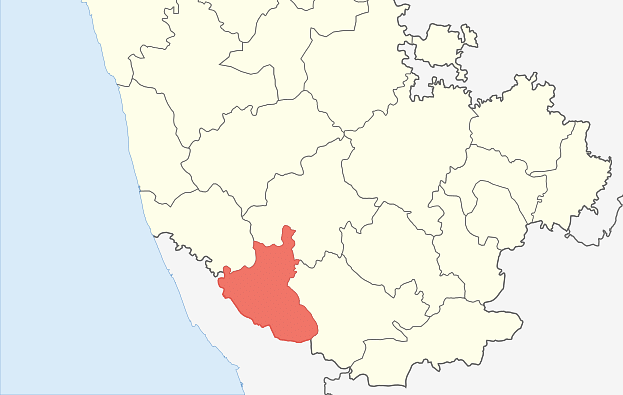Insta
After Lingayats, Now Kodavas Demand Minority Status In Karnataka

Kodagu district (in red) in South Karnataka (Nayvik/Wikimedia Commons)
Following the Government of Karnataka’s decision to accord ‘minority religion’ status to the Lingayat community in the state, the Kodava community too has demanded for the same, reports News18. Two representatives from the Kodava community, also known as Coorgis – M M Bansi and Vijay Muthapa – have sent a memorandum to the government seeking the minority tag.
The Kodavas hail from the coffee-growing Kodagu district (formerly Coorg district) of southern Karnataka. With an approximate population of 1.6 lakh, the community was classified by the British as a ‘martial race’. The first recorded instance of the community dates back to 1174 CE during the Hoysala dynasty.
The demand is currently with the Karnataka State Minorities Commission (KSMC), which has reportedly deferred the matter.
Kodagu was an independent state till the 1830s after which it was annexed by the British who governed it as a separate state till 1947. It remained an independent ‘C’ state till 1956 when it was merged into the larger Mysore State (later Karnataka) following the States Reorganisation Act, 1956.
Several Kodava activists have in the past demanded an autonomous hill council for the district on the lines of the Darjeeling Gorkha Hill Council (DGHC) or the Gorkhaland Territorial Administration (GTA) in the Darjeeling region of West Bengal.
Prominent members of the Kodava community include Field Marshal K M Cariappa and General T S Thimmayya of the Indian Army.
The KSMC however said that for any sect to demand a minority tag or a separate religion status, they would have to have a holy book and a prophet of their own. The commision said that the Lingayats had a prophet and a book, but the Kodavas did not.
Support Swarajya's 50 Ground Reports Project & Sponsor A Story
Every general election Swarajya does a 50 ground reports project.
Aimed only at serious readers and those who appreciate the nuances of political undercurrents, the project provides a sense of India's electoral landscape. As you know, these reports are produced after considerable investment of travel, time and effort on the ground.
This time too we've kicked off the project in style and have covered over 30 constituencies already. If you're someone who appreciates such work and have enjoyed our coverage please consider sponsoring a ground report for just Rs 2999 to Rs 19,999 - it goes a long way in helping us produce more quality reportage.
You can also back this project by becoming a subscriber for as little as Rs 999 - so do click on this links and choose a plan that suits you and back us.
Click below to contribute.
Latest